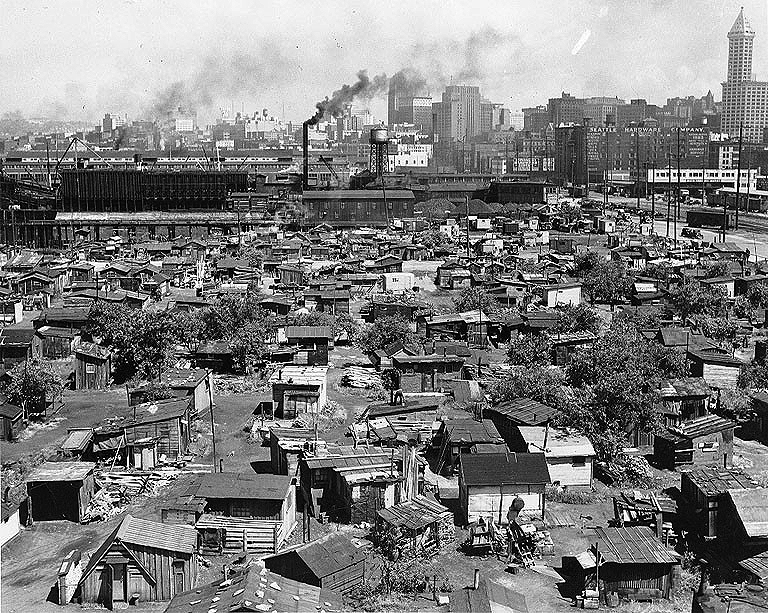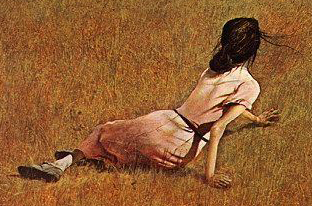The Girl on the Train
One day in the mid-1990's I was driving through Seattle with Jules. It was a day like any other and we were headed through South Seattle coming home from shopping or something equally mundane. Before recent construction changed the landscape of this area the land south of The Kingdome was something of a no-man's-land. Empty, weed-choked lots competed with tired and worn diners for the meager traffic of the down and out. One large open field, it was pointed out to me, had been the location of Seattle's "Hooverville" during The Great Depression; an empty lot filled with the tarpaper shacks of the unemployed and disenfranchised. Hooverville was long gone, but the character of it remained in the neighborhood.  Hooverville, south of Downtown
Seattle, Washington
c. 1931
The railroad still cuts down the middle of this land, the same as it did back in the 30's when it offered those who wished to dream of better things an avenue to try to find them elsewhere in the country, though all most of those people found were more places that looked like Seattle, with homeless camps, no jobs, and the reek of too many people living in too small a place. I thought about those people sometimes as I drove through this area. There was something about the old diners built into railway cars, overgrown lots and archaic signage that was oddly comforting, like there was a continuity between that time and this. As we approached the railroad tracks to cross them the lights sounded and the gates came down without a train in sight, and I pulled the car up to the gate and stopped, scanning left and right for any sign of a train, but the tracks were empty. I turned off the car and waited. A low rumble and the urgent clang-clang-clang of a bell told me that a locomotive was approaching from that direction, and so I lazily waited for it to pull into view from behind the hulk of the box truck that had pulled up next to me at the crossing. The engine emerged doing about 10 MPH right in front of me and I was immediately struck not by the hulking size of the locomotive, but by what was on top of it. Rather, I should say who. Sitting on top of 100 tons of steel was a girl of about 16. She sat only about 4 feet back from the leading edge of the engine, sitting straight upright with her hands out in front of her as if to steady herself, and her legs folded together as if she was riding the train side saddle. In that moment i could instantly see Andrew Wyeth's painting called 'Christina’s World', she so reminded me of that position and feeling. She was wearing jeans and a worn sweater as I recall, and there was a canvas shoulder back at her side and looped loosely over one shoulder. Aside from that she seemed to have no possessions and yet she sat regally upon an iron chariot. There was something in her posture and in the way she did not notice myself or the other traffic. She sat with her head held high and her eyes fixed on the horizon as if she beheld some great future off in the distance and she was determined to keep her eyes on the prize. The train rattled slowly past me while the girl moved in a slow arc across the top of my windshield and then out of sight behind the shoulder of the mighty train as it trundled by. I sat in silence and savored the sight of her, not because of the beauty of her form so much as the ideal that she represented. She seemed to spring both from the ghosts of the innocent victims of the Great Depression as well as my own yearnings to move toward the horizon. She was not meant for me or to meet me, but I felt like I was meant to see her and to carry her memory with me. For several years I seemed to think of that girl every day. Over time that rate has faded to where now she only emerges from the darkness of mind on irregular intervals, but she is still there, holding fast to her train and to her vision of the horizon and I feel like I have a closer tie to my own vision when I think of her. |
